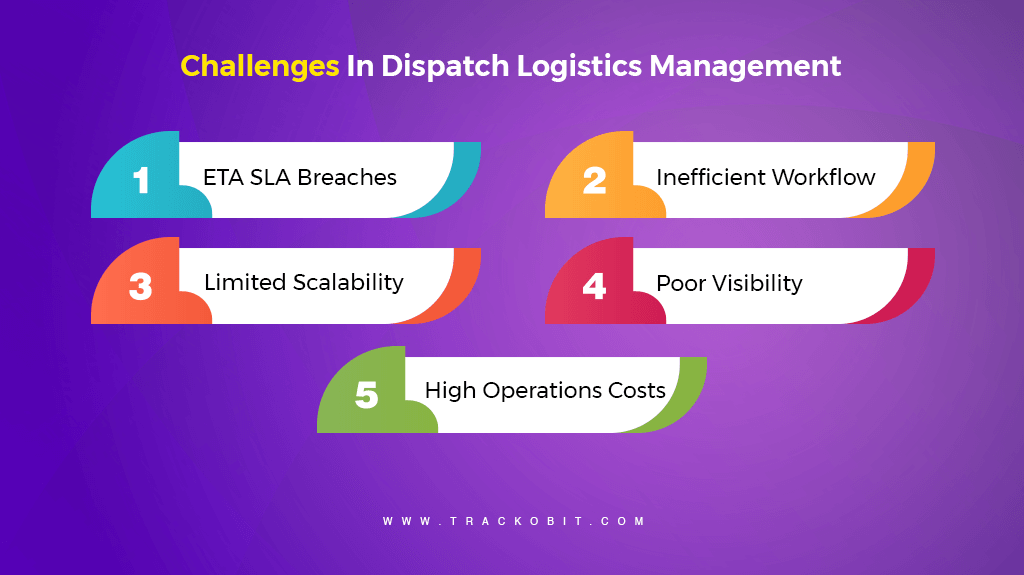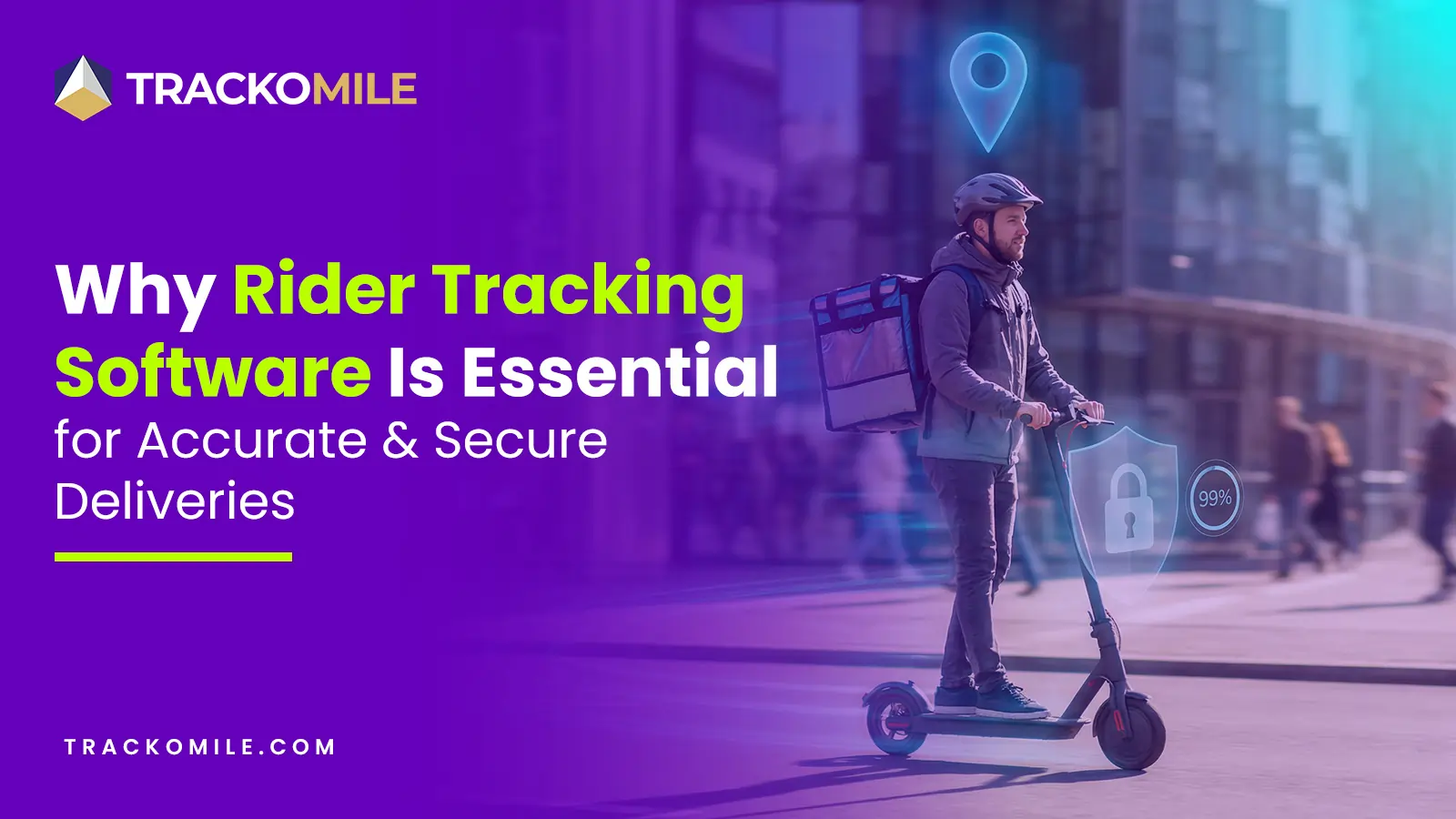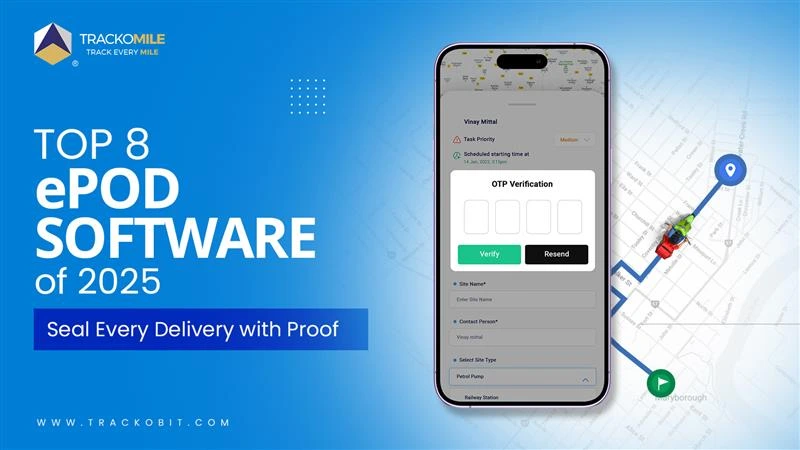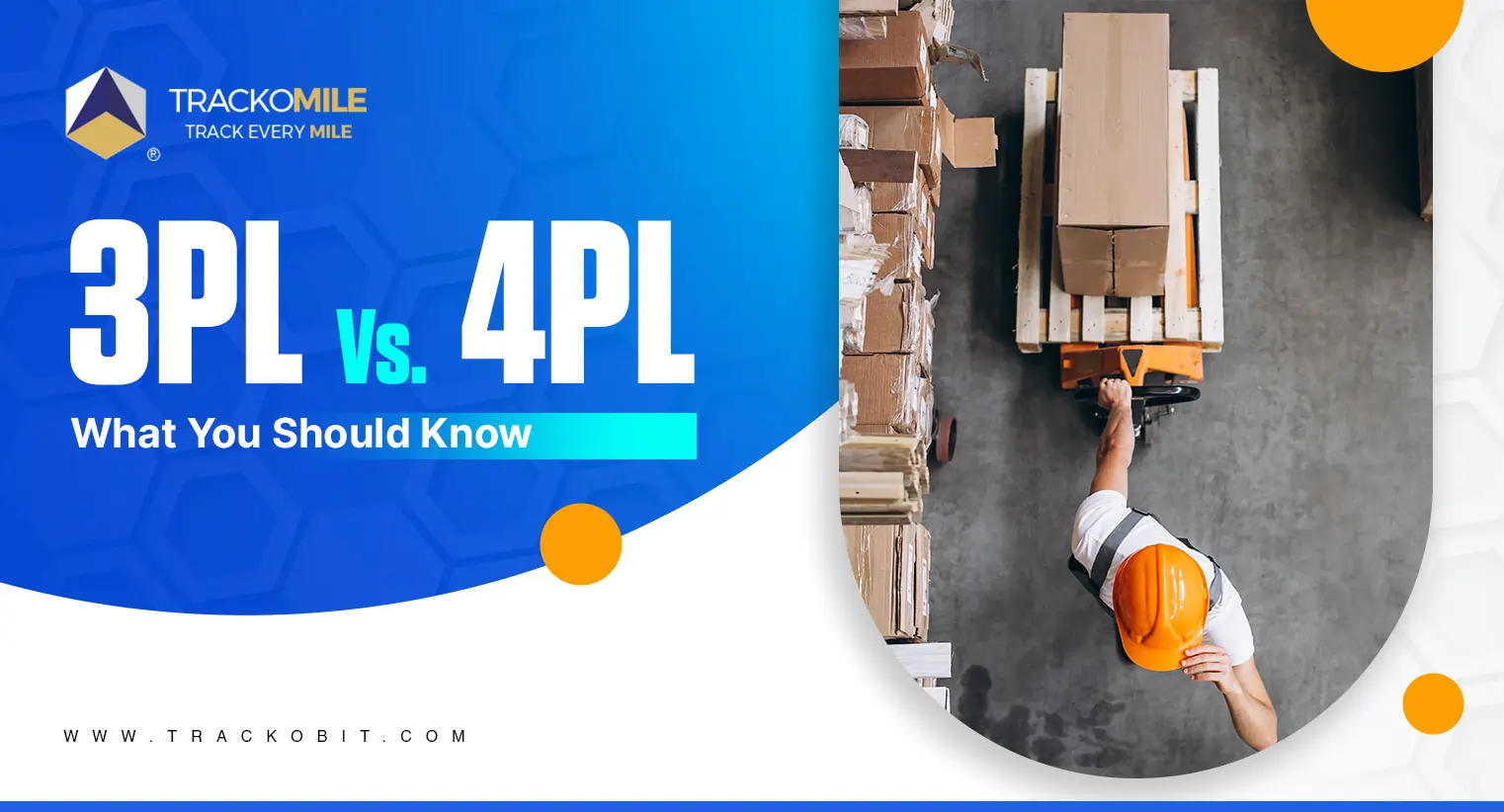-
TrackoBit
Manage commercial vehicles with the new-age Fleet Management Software
TrackoBit -
TrackoField
Streamline your scattered workforce with Field Force Management Software
TrackoField -
Features Resources
-
Blog
Carefully curated articles to update you on industrial trends. -
White Paper
Insightful papers and analysis on essential subject matters. -
Glossary
Explore an alphabetical list of relevant industry terms. -
What’s New
Get TrackoBit & TrackoField monthly updates here. -
Case Study
Explore the cases we solved with our diverse solutions. -
Comparisons
Compare platforms, features, and pricing to find your best fit.
-
About Us
Get to know TrackoBit: our team, ethos, values, and vision. -
Careers
Join the most dynamic cult of coders, creatives and changemakers. -
Tech Support
Learn about our technical support team and services in detail. -
Events
Check out the exhibitions where we left our marks and conquered. -
Contact Us
Connect with us and let us know how we can be of service.
What is Dispatch Tracking in Logistics?
- Author:Tithi Agarwal
- Read Time:10 min
- Published:
- Last Update: November 24, 2025
Table of Contents
ToggleIf you don’t want to spend hours tracking shipments, planning routes and organising delivery and driver schedules, it’s best to adopt dispatch tracking software. Read further for efficient and optimised deliveries.
Table of Contents
Toggle
With more and more businesses offering online services and consumers increasing their delivery habits, there is an exponential growth in the need for smart and reliable dispatch tracking software. The emergence and growth of new business models, such as hyper-local and same-day delivery, are driving the growth of dispatch tracking in logistics.
Also, the fact that more and more customers are demanding transparency and visibility in the delivery and dispatch process has given rise to the demand for robust dispatch management.
If you are a brand or retailer or a logistics company owner managing a large fleet, dispatching will play a vital role in your business. It has the capability to positively affect the profitability, efficiency, and customer base of your business.
Here is a guide to acing the dispatch tracking and management game.
Dispatch Tracking- What is it?
Dispatch tracking in logistics is the process of monitoring the shipment while being transferred from one place to another. Dispatching generally consists of planning, managing, tracking, and controlling the entire logistics.
With the help of dispatch tracking software like TrackoMile, coordinating the movement of orders within the supply chain becomes easy. It involves coordinating with riders, companies and other third parties to ensure the shipment reaches its destination on time and with minimum delivery costs. Dispatch tracking is essential for customer satisfaction, order and driver management, and a smooth day-to-day operation.
Steps Involved in the Dispatch Process
Having a clear understanding of what entails in the dispatch process is essential for a robust process.
Step 1 – Order Receipt and Verification: This involves verifying order details, such as type of goods, volume, destination, customisation details and customer details.
Step 2 – Planning and Scheduling: Up next, according to order details, logistics planners will schedule the dispatch. This includes planning efficient routes, scheduling order dispatch, pairing orders with suitable vehicles and available riders while determining delivery timelines.
Step 3 – Preparations and Loading: In this step, the order is prepared for dispatch. This includes processing, picking, and customising ( if any) and packing and loading the items into the assigned vehicles.
Step 4 – Dispatch Execution: after loading the order in the vehicle, the transport leaves the warehouse or distribution centre. This is where the transit phase begins, with the goods leaving for their final destination.
Step 5 – Tracking and Monitoring: This includes real-time location tracking, monitoring product conditions (for example, the temperature in case of temperature-sensitive goods), and providing accurate ETA.
Step 6 – Delivery and Confirmation: this is the last leg of the dispatch process, where the product is delivered to the end consumer. The delivery is confirmed with the help of PODs, which are recorded in the dispatch tracking system.
Step 7 – Feedback and Reporting: Riders can collect feedback digitally, and the dispatch tracking software provides detailed reports on transit time, causes of delays and other details that are recorded for improvement and analysis purposes.
Challenges In Dispatch Logistics Management and How Automation Helps
ETA SLA Breaches
Manual dispatch delivery has a higher chance of things/deliveries going wrong, and real-time updates cannot be tracked or received. The only way for them to receive updates is through constant updates, which is really inconvenient.
However, the power of automation can help businesses keep track of all the dispatch operations combined with the delivery fleet in one place. Also, an automated dispatch system formulates a daily operation plan, ensuring that everyone is on the same page.
Inefficiencies in Delivery Workflows and Timelines
Manual management and monitoring of the entire logistics process can get too much and might hinder the growth of the company. Also, the reasons for delays, re-attempts, or failures cannot be determined because of the lack of visibility of the order movement.
Also, allocating orders, keeping in mind the number of constraints, such as delivery timelines, rider availability, vehicle costs, delivery location, and operational cost, is tough to handle.
But by leveraging automation, businesses can plan and strategise order dispatching with an optimised and streamlined delivery workflow. (A workflow that can take into consideration all the constraints, limitations, and influencing factors.)
The automated dispatch logistics management solutions also provide intelligent, automated notifications for managers, drivers, end users, and other relevant parties for effective management and operational transparency.

Limited Scalability
Different methods are used by each partner or service provider in the dispatch logistics ecosystem to record information, including shipment status. Nowadays, businesses struggle to have a unified view and management skills over all these components because there is a lack of consistency across all these statuses.
This, in turn, restricts the scalability because more unstructured data and more complicated administration result from adding more service providers or partners.
However, automated dispatch logistics management puts all of the responsibility for status standardisation, updating, monitoring, and verifying software.
Thus, companies can simply scale as needed and use the same method for one hundred or a thousand orders.
Poor Visibility
Every day, firms like courier services handle thousands of orders. Orders are not tracked in real-time in manual dispatch-delivery methods, which results in a lack of transparency. Mismanaged deliveries may result in considerable delays and jeopardise the client experience if they cannot be tracked on time.
However, consumers can take prompt action by receiving warnings from automatic dispatch software about any concerns, such as breakdowns, traffic jams, and weather conditions. In addition, in the event of an unanticipated delay, the consumer is informed beforehand.
Similarly, companies receive real-time information about order movements from leg to leg, enabling them to track the progress of shipments. Predictive notifications are also provided by the automated smart dispatch logistics system for any significant occurrence, such as incidental costs, that may have an impact on delivery ETAs or other important benchmarks.
Read Blog – Best Courier Delivery Software of 2023
Higher Operational Costs
The intricate process of deliveries and shipment movements involves multiple processes, including sorting orders, assigning them, choosing vehicles, identifying the appropriate delivery executive, etc. Manual dispatching usually requires several teams to complete.
This makes the system more vulnerable to inefficiencies in addition to adding to its redundancies. Furthermore, the most efficient delivery routes are never guaranteed when a team consists of a larger number of members. The human factor has an impact on overall operating costs and can also lead firms towards loss.
Implementing intelligent dispatch-delivery software expedites delivery and reduces errors. Team members can dedicate more of their time to more important duties with the new emphasis on essential functions for enterprise growth.
What is Dispatch Tracking Software?
Dispatch tracking system is an automated platform that helps businesses automate their dispatch-related activities like monitoring, tracking, managing and controlling the dispatch of orders. The software provides an efficient way to coordinate routes, plan and schedule delivery, and track and orchestrate highly efficient delivery.
Some examples include:
- Workflow automation
- Rider or driver management
- Shift or roster management
- Automated billing and invoicing
- Routing of the vehicles to job sites or delivery locations
- Reassigning them and
- Tracking their movements
Why is Dispatch Management Software Important?
Are you wondering why you should dedicate more time and resources to dispatch management? The reason is that with a growing customer base and adaptation to the latest delivery trends, having a well-organised and efficient dispatch operation can benefit companies.
Meet Customers’ Demands for Same-Day Delivery
With more and more consumers demanding same-day delivery, it is becoming a critical factor for success. This is compelling businesses to offer it more than ever before. Responding quickly has become a dire need to stay in the competition.
Effective dispatch management is necessary to run a rapid delivery company in order to ensure efficient routes, lower costs, and a seamless delivery process.
High Customer Expectation
According to one study, more than 70% of shoppers identify convenience and free delivery as their top reasons for shopping online.
Customers anticipate that their online orders will be processed quickly and delivered right to their door. However, the pressure on shipping and delivery companies has grown as the demand for online orders rises.
You, therefore, cannot afford to make errors that cause your shipping process to lag if you want to grow in the digital era, keep your current clientele, and raise customer satisfaction levels.
Smart Rider/Driver Fleet Management
Many are of the opinion that poor dispatch management will only lead to delayed deliveries and customer dissatisfaction. But this also affects drivers as well and will eventually lead to higher driver turnover.
You are more likely to retain and attract drivers that value time and effort. An automated dispatch system can do away with this issue and aid driver assigining and route planning. Right from shift management, roster planning and delivering orders, it is automated and well planned out.
Optimised Transportation Cost
Transportation costs have been one of the influential factors for courier businesses. And traditional practices are not exactly helpful/successful in this.
But with well-planned dispatch management, you can achieve success in reducing transportation costs. Moreover, you will no longer have to hire more drivers to meet the demand and can effortlessly and strategically assign orders and loads to the drivers. Besides reducing driver attrition rates, companies can free up more of their funds for rehiring and retaining rivers.
The Dispatch Logistics Management software is really helping businesses be cost-effective through
- Reducing the number of trips
- Delivering more orders in one trip
- Combine pickups and returns for optimal resource utilisation
- Trap last mile issues
- POD incorporation, validation, and authentication
- Smart routing based on multiple custom constraints
Increased Customer Satisfaction
The prime focus of dispatch tracking is to amp up the level of customer satisfaction and also allow businesses to offer efficient customer service. Make sure there are no slip-ups, operations are transparent, and every moving phase of the order is highly visible.
Dispatchers must schedule drivers, plan appropriate routes, and alert recipients about anticipated delivery times in order to maximise delivery efforts. This lets delivery drivers to ship items to customers more quickly if these requirements are correctly implemented. Customers can anticipate when their packages will arrive and plan to be present to accept them by using dynamic ETAs. As a result, there will be fewer inquiries from clients concerned about their packages’ whereabouts, fewer hold-ups, fewer attempted deliveries, and unsatisfied clients.
Features of Dispatch Tracking Software
The main function of dispatching software like TrackoMile is to track and monitor the riders’ and shipments’ location and status. It has features and solutions that allow the dispatcher to optimise the process.
Automated Order Allocation
The software automates the task of pairing the orders with available drivers and vehicles along with routes. Dispatchers can assign jobs automatically and also keep track of the delivery progress. It does so on the basis of factors such as:
- Driver skills
- Distance from the fulfilment centre to the destination
- And 50 other custom factors
Also, the system ensures there are no loopholes or errors in the strategies. All the required data
is provided without the managers having to type it all. Data such as:
- Delivery address
- Date and time for each delivery
- Predetermined routes for the destination
Is provided without the managers having to type it all.
Real time Tracking for Visibility
The cornerstone of dispatch tracking software is to provide ultra-clear and real-time updates on the whereabouts of the orders and riders. The feature promises visibility into the operation, which is helpful for swift decision-making in response to any logistic challenges that might crop up.
Multi-stop Route Optimisation
Another vital feature of the dispatch management software is that it automatically chalks out multi-stop sequencing and provides route optimisation. It does all this in just seconds. The system has a rule engine that takes into consideration 120+ influential factors, such as:
- Traffic
- Distance
- Delivery schedules
This helps to save time and reduce fuel consumption and costs.
Post-Dispatch Functionalities with Rider App
The post-dispatched part cannot be overlooked as it is of similar importance and can help resolve any issue that dispatch tracking might encounter. The system sends tracking notifications to all the stakeholders involved in the process, be it dispatchers, sellers, and customers.
Also, software like TrackoMile has a rider app that makes it easy for drivers to collect PODs. Also, it supports multiple formats of proof of delivery like photo upload, OTP, barcode scanning, and e-signatures.
Powerful Data- Analytics
Strong analytics and reporting features enable companies to obtain insightful knowledge about how they operate. Businesses may pinpoint areas for development and make data-driven decisions to streamline their operations by evaluating data on delivery times, route effectiveness, and other important indicators.
API Integration
The best part of using TrackoMile’s dispatch tracking system is that it can be integrated seamlessly into any pre-existing system. This helps enhance the efficiency of the delivery operations. Allowing businesses to offer exceptional services and an item delivery system because they have the assistance of the software.
Conclusion
Instantly detect any hiccups in the delivery process and do away with them all together with automated dispatch tracking. Having software to do all the planning and scheduling can take the business forward by leaps and bounds. The dispatch tracking software is proving to be a catalyst after seeing all the benefits businesses can reap from it.
TrackoMile’s dispatch tracking software is a complete package that does not require dispatch to allocate extra resources and time in tracking dispatches. It has a full suite of solutions that allow businesses to achieve desired results.
Frequently Asked Questions
-
What are the benefits of dispatch tracking?
Here are some of the benefits of dispatch tracking through dispatch software: - Transportation management - Automated scheduling - Route optimization and real-time route updating - Monitoring driver behavior and safety - Business intelligence tools - Scalability and flexibility - Improved customer satisfaction
-
What does dispatch mean in shipping?
In shipping and logistics, the term "dispatch" refers to the action of sending out goods or shipments for delivery. It involves coordinating the movement of products or cargo from a point of origin to a designated destination. The dispatch process encompasses various tasks and activities aimed at ensuring the timely and efficient transportation of goods.
-
What is the logistics tracking process?
The logistics tracking process involves monitoring and managing the movement of goods, shipments, or assets from the point of origin to the final destination. This process is crucial for ensuring transparency, efficiency, and timely deliveries. Here are the key steps in the logistics tracking process: - Order Placement - Order Processing - Dispatch and Carrier Assignment - Real-time Tracking - Status Updates - Proof of Delivery
-
What is dispatch tracking?
Dispatch tracking refers to the process of monitoring and managing the movement of goods or services from one location to another. This tracking is especially crucial in logistics and transportation industries, where it helps ensure the timely and efficient delivery of products or services to customers.
-
What does dispatch status mean in logistics?
In logistics, the term "dispatch status" refers to the current state or condition of a shipment or delivery at a specific point in time. It provides information about the progress and location of goods in transit, allowing logistics professionals, shippers, and recipients to monitor the status of a shipment. Dispatch status is crucial for effective logistics management and ensuring timely and accurate deliveries.
-
What is the difference between dispatch and deliver?
Here is the difference between dispatch and delivery:
Dispatch Delivery Dispatch refers to the act of sending out or dispatching goods, products, or services from a particular location or point of origin. It involves the preparation and organization of items for transportation. Delivery, on the other hand, is the act of transporting and handing over the dispatched goods to the intended recipient or destination. It is the final stage where the goods reach their destination and are received by the person or entity for whom they were intended.
Tithi Agarwal is an established content marketing specialist with years of experience in Telematics and the SaaS domain. With a strong background in literature and industrial expertise in technical wr... Read More
Related Blogs
-

How Rider Tracking Software Improves Delivery Accuracy and Reduces Fraud
Tithi Agarwal December 8, 2025Rider tracking software improves delivery accuracy with real-time GPS visibility and automated ePOD. It also enables route optimisation and fraud…
-

Top Electronic Proof of Delivery (ePOD) Software in 2026
Tithi Agarwal September 25, 2025Electronic proof of delivery has become the backbone of modern logistics. Explore the top 8 ePOD software in 2025 and…
-

3PL vs. 4PL: Which is Best for Your Business?
Tithi Agarwal September 25, 2024Confused about choosing between 3PL and 4PL for your retail supply chain? Read this blog to find out which is…
-

What is Payload Capacity? Payload Capacity Vs. Towing Capacity
Tithi Agarwal September 10, 2024Payload capacity is the total weight a vehicle can safely carry, and it is crucial for safety and compliance. Exceeding…

Subscribe for weekly tips to supercharge your last-mile delivery.
Your inbox awaits a welcome email. Stay tuned for the latest blog updates & expert insights.
"While you're here, dive into some more reads or grab quick bites from our social platforms!"Stay Updated on tech, telematics and mobility. Don't miss out on the latest in the industry.
We use cookies to enhance and personalize your browsing experience. By continuing to use our website, you agree to our Privacy Policy.


































